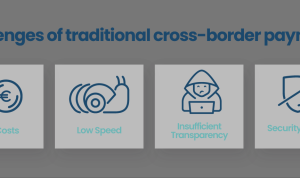Top Trends in Online Payment Technology are reshaping the way we conduct transactions, making them faster, safer, and more convenient than ever. As digital payments gain traction across various sectors, understanding these trends becomes essential for businesses and consumers alike. From the rise of mobile wallets to the integration of artificial intelligence, the landscape of online payment technology is evolving rapidly, presenting exciting opportunities for innovation and growth.
With the increasing demand for seamless payment experiences, technologies are emerging that enhance security and user engagement. As we dive deeper into this topic, we will explore the key developments that are influencing online payment methods and how they are transforming our daily interactions with money.
In today’s fast-paced world, where technology and communication have become integral to our daily lives, the significance of digital literacy cannot be overstated. Digital literacy encompasses a range of skills that allow individuals to effectively navigate, evaluate, and create information using digital technologies. This article delves into the importance of digital literacy, its components, and how it shapes our interactions in both personal and professional realms.To begin with, digital literacy is not merely about knowing how to use a computer or navigate the internet.
It includes a broad spectrum of competencies that are critical in the 21st century. These competencies include but are not limited to: understanding online safety and privacy, being able to critically evaluate sources of information, communicating effectively through digital platforms, and creating content using various digital tools. In essence, digital literacy empowers individuals to engage with the world in a meaningful way.One of the most pressing reasons for enhancing digital literacy is the sheer volume of information available online.
With billions of websites and countless social media platforms, it can be challenging to determine which sources are credible. Misinformation and disinformation are rampant, making it crucial for individuals to develop the ability to critically assess the information they encounter. This skill not only helps in making informed decisions but also fosters a more informed society.Moreover, digital literacy has become essential in the workplace.
Many jobs today require a certain level of technological proficiency, and employers often look for candidates who can demonstrate strong digital skills. This includes familiarity with software applications, the ability to collaborate online, and effective communication through email and messaging platforms. As businesses increasingly rely on digital tools for their operations, the demand for a digitally literate workforce continues to grow.In addition to its relevance in the job market, digital literacy plays a significant role in personal development.
Social media, online learning platforms, and various apps offer endless opportunities for individuals to learn and grow. Digital literacy equips people with the skills to utilize these resources to their advantage. Whether it’s enhancing one’s knowledge through online courses or connecting with others through social networks, being digitally literate opens up a world of possibilities.It’s also important to highlight the role of digital literacy in promoting social inclusion.
In an increasingly digital society, those who lack digital skills may find themselves at a disadvantage. This digital divide can lead to inequalities in access to information, services, and opportunities. By fostering digital literacy, we can help bridge this gap and ensure that everyone has the ability to participate fully in society. Programs aimed at teaching digital skills to underrepresented communities are essential in creating a more equitable landscape.Education systems worldwide are beginning to recognize the importance of digital literacy, integrating it into their curricula.
Schools are not only teaching students how to use technology but are also emphasizing critical thinking and problem-solving skills in digital contexts. This shift is crucial as it prepares students for a future where digital skills will be paramount. By equipping young people with these competencies, we are setting them up for success in an ever-evolving digital landscape.In light of this, various organizations and institutions are developing resources and training programs to enhance digital literacy.
These initiatives often focus on specific demographics, such as seniors, students, or low-income individuals, tailoring their approach to meet the unique needs of each group. Such targeted efforts are vital in ensuring that everyone can acquire the digital skills necessary for today’s world.Furthermore, the importance of ongoing learning in digital literacy cannot be emphasized enough. The digital landscape is continually changing, with new technologies and platforms emerging regularly.

Keeping abreast of these changes requires a commitment to lifelong learning. Individuals must be willing to adapt and update their skills as new tools and practices evolve. This adaptability is a key aspect of being digitally literate.In conclusion, digital literacy is an essential competency for navigating the complexities of modern life. It encompasses a variety of skills that enable individuals to effectively engage with information, technology, and others in a digital context.
As we move further into the digital age, the importance of fostering digital literacy cannot be overstated. It is a cornerstone for personal empowerment, professional success, and social inclusion. By prioritizing digital literacy, we can build a more informed, equitable, and connected society, ensuring that everyone has the opportunity to thrive in the digital world.





